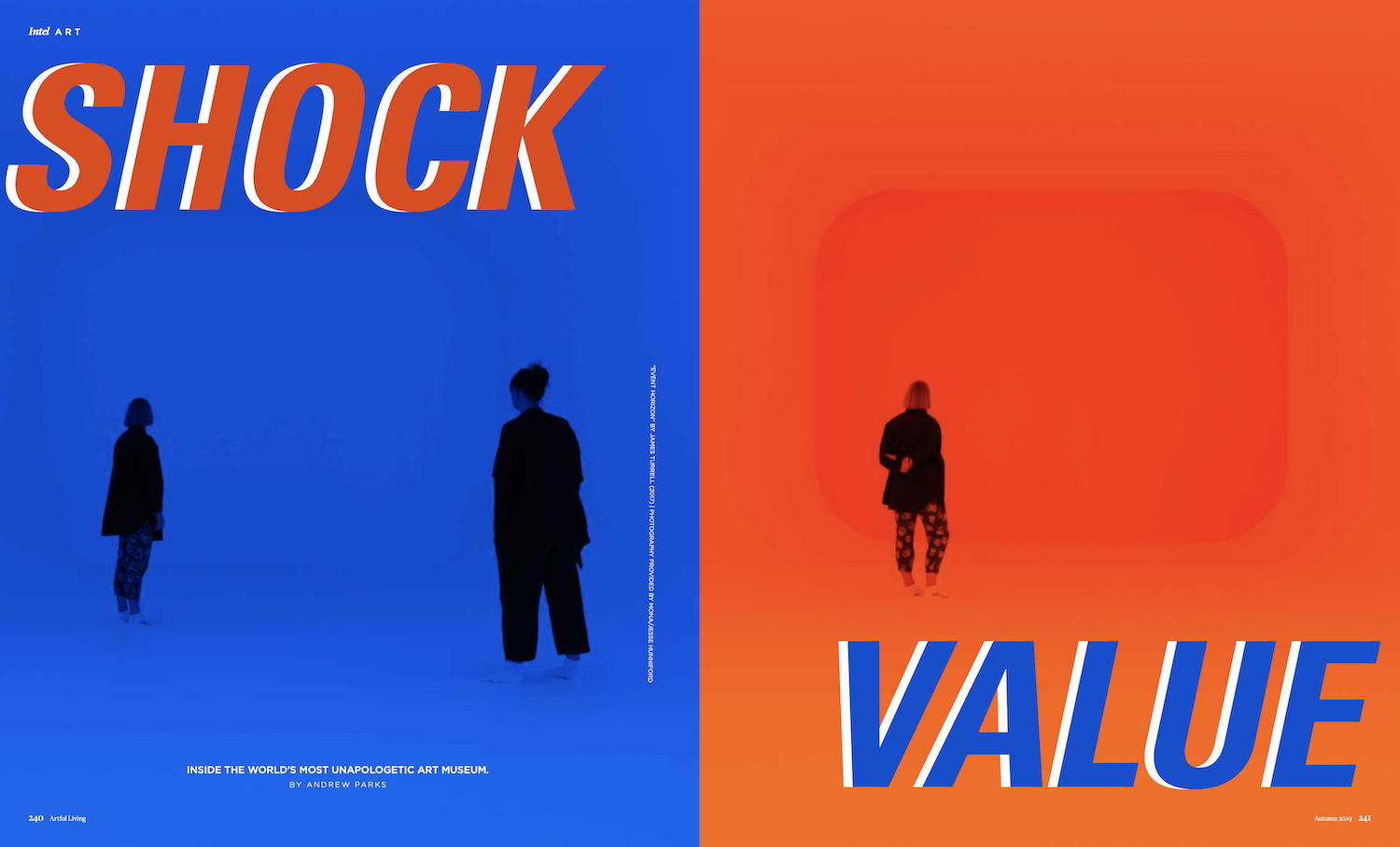🔗 For some visitors to Tasmania’s Museum of Old and New Art — like the hundreds who left hostile one-star TripAdvisor reviews after feeling “extremely disappointed” or downright “appalled” — it’s hard to decide what to hate first.
There are a few obvious choices in the permanent collection, like Hermann Nitsch’s blood-soaked “6-Day Play” videos, a wall covered in anatomically correct vaginas (Greg Taylor’s porcelain-based “Cunts… and other conversations”), and a gastrointestinal machine that relieves itself every afternoon and reeks of inhuman waste (Wim Delvoye’s “Cloaca Professional”).
But look beyond these button pushers, and you’ll find a multilayered, resolute philosophy, one that reaches deep into the restless mind of MONA’s enigmatic founder, David Walsh. While it’s easy to write off his most divisive pieces as the wild provocations of a lapsed Catholic, they merely hint at the heavy themes lurking beneath the island state’s biggest tourist draw. Many of which are far more complex than furrowed vulvas and tubes of toxic bacteria.

Ever since the museum opened in early 2011 with its flagship exhibition, Monaisms, Walsh’s self-contained universe has shone a light on artwork that gets to the very heart of the human condition. Whether displaying an ornate coffin from ancient Egypt or the erotic 18th century prints of Torii Kiyonaga, MONA demonstrates how we evolved to express our greatest fears and desires across different mediums.
“Art has a biological purpose,” explains Senior Curator Nicole Durling. “It’s there for a reason. That’s why the museum exists; it looks at what drives us, what makes us human. Why do we build buildings? Why do we paint paintings? Why do we play music?”
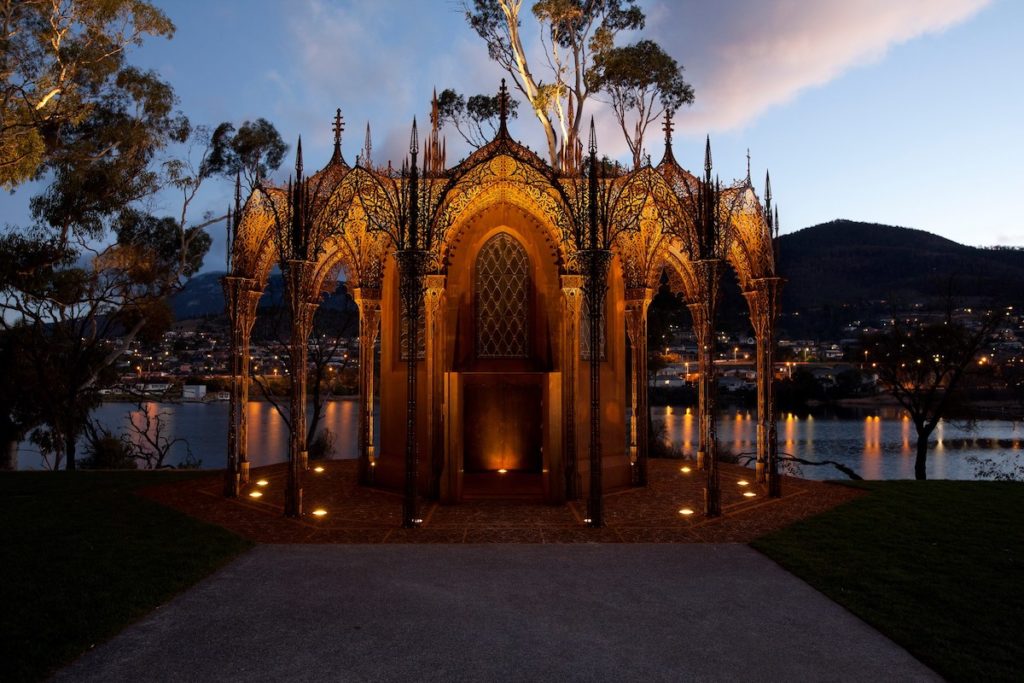
It’s about more than just our motives for creating, though. MONA often rattles sensitive viewers because it reveals the absolute best and worst aspects of our existence. “Some people find it difficult to be confronted with a mirror of themselves, but it’s all part of who we are,” she adds. “To say this artwork is here for shock value says a lot about us as the human race. We do terrible things to ourselves, but we’re also inventive and playful. One body can be all of those things at the same time.”
Another controversial example of this contradiction is a shallow bowl Jannis Kounellis filled with live goldfish and a chef’s knife back in 1991. Now on permanent display at MONA, it’s often pointed to as evidence of Walsh’s ambivalence toward animals (despite the fact that none of his fish have ever gotten hurt).
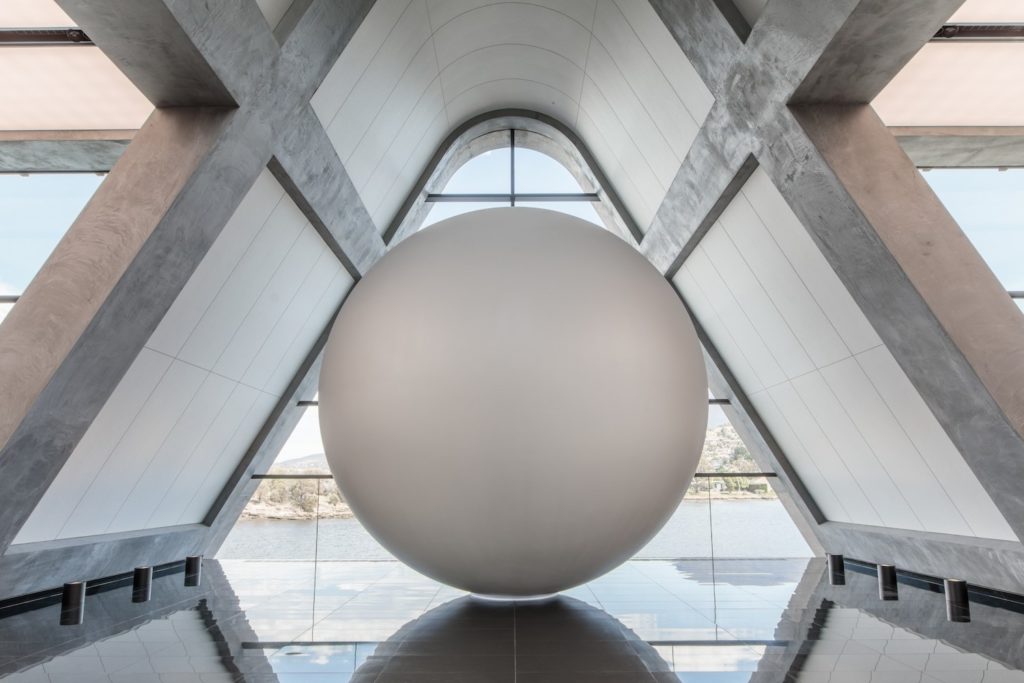
“People complain incessantly about that,” Walsh explains. “Because the only reason that we should torture animals is for food. Entertainment or social commentary or art — that’s just indulgent. Our goldfish go home to a bigger tank, but that isn’t good enough. Our fish atrocity would only be appropriate if we ate them.”
“A fish swimming around a fishbowl is nothing,” adds Durling. “It’s lovely, very peaceful, but the simple act of adding a knife changes that dynamic. Most of us try to go about our day not being confronted with this stuff, but if you take a step back, [violence] is in our everyday lives.”
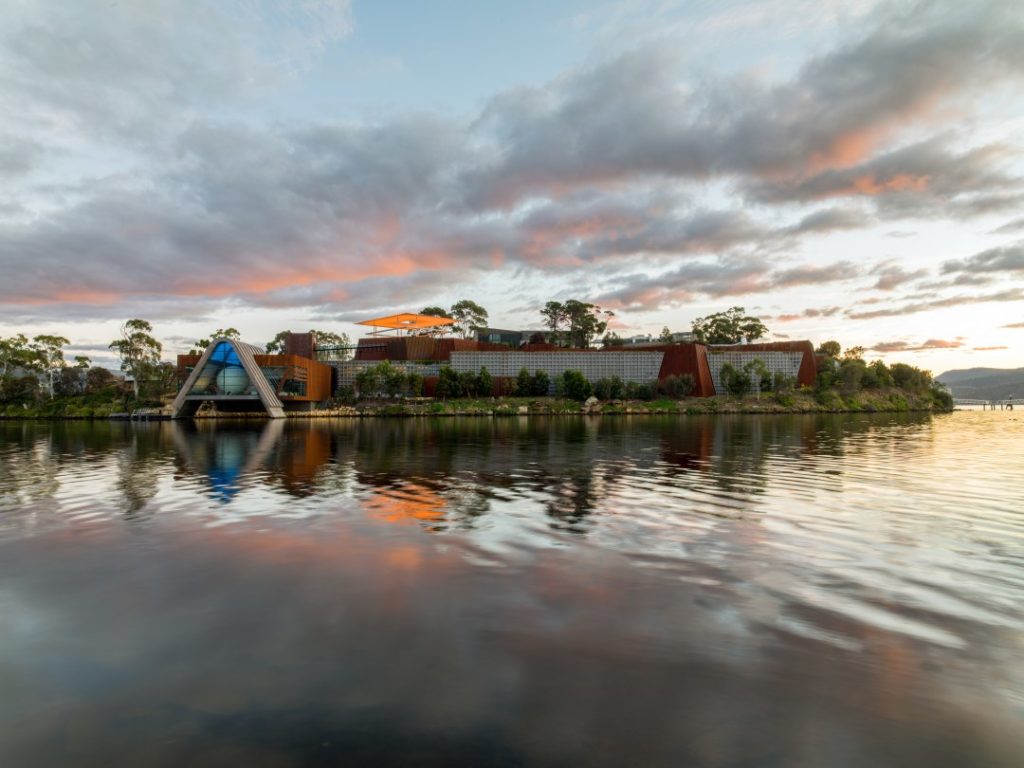
Australian composer Lawrence English performed at MONA’s annual Dark Mofo festival (which brings major artists like Marina Abramovíc, Laurie Anderson and St. Vincent to the capital city of Hobart every winter) back in 2017 and found himself immediately struck by the museum’s unconventional structure. In fact, he was more disturbed by its disorienting layout and the nuanced corners of its collections than by the slaughtered bull that hogged headlines that year. (Hermann Nitsch hosted a three-hour, adults-only ritual featuring “meat, fish, fruit and blood, live performers, and an orchestra,” not unlike the transgressive “actions” he led in Vienna in the sixties.)
“MONA’s more subtle works are the most telling of how they want to challenge and provoke,” English notes. “The Pharos wing, which houses a number of James Turrell pieces, is a great example. His ‘Perceptual Cell’ work (a sensory deprivation tank on psychedelics, essentially) remains one of the most confronting and confounding psychological experiences I have had the pleasure to encounter. ‘Event Horizon’ (a light bath that obliterates one’s depth perception) speaks to our sensory capacities and their failings. This teasing of us as viewers is something other museums might not relish quite as much.”
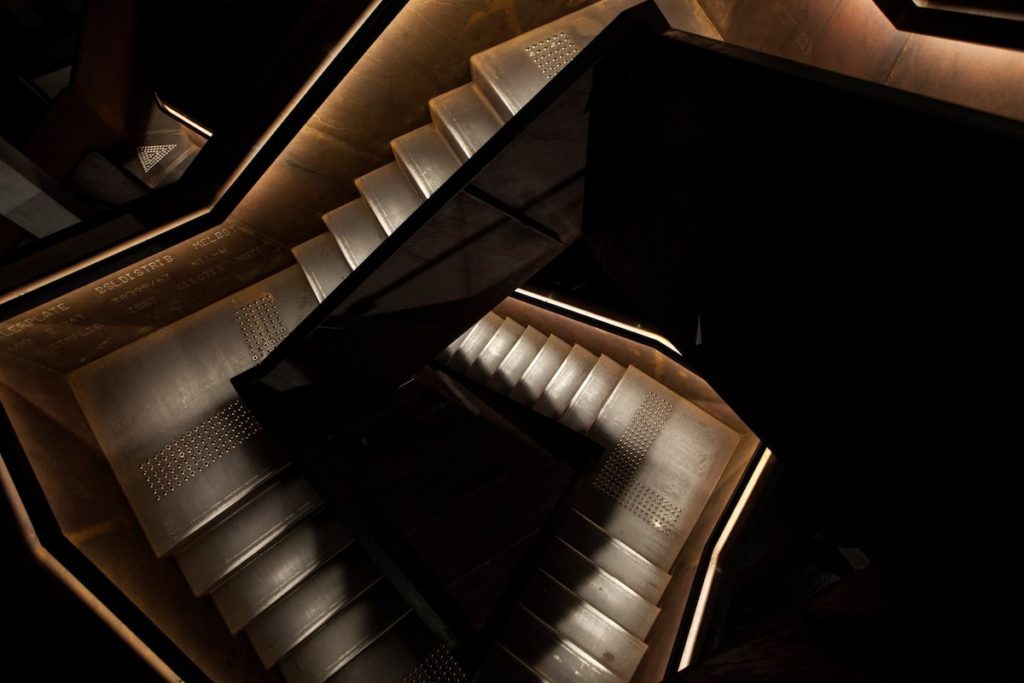
This kill-your-idols approach to curation and design is a recurring complaint about MONA. Since Walsh isn’t from a traditional art background — he’s a stat-crunching mathematician who made his millions gambling — he’s determined to rewrite the rules of what a museum is. In many ways, MONA can feel like a disorienting visit to Bruce Wayne’s Batcave, starting with a long descent into the subterranean lair that houses its winding passageways.
In fact, Walsh has done pretty much everything in his power to piss off the industry elite who portray art as a coded language that they innately grasp and that the rest of us will never quite get. To that end, rather than hold museum goers by the hand with guided tours, MONA encourages them to use a geotagged smart device dubbed the O. A way of choosing your own adventure, it replaces the tired wall text of traditional museums with triggered interactions, sound clips, and loose variations of what it all means.
“We don’t have all the answers, and sometimes we make it up as we go along,” says Durling. “That’s something a lot of people have responded to. It’s refreshing to be honest and authentic, to say there are no absolutes.”
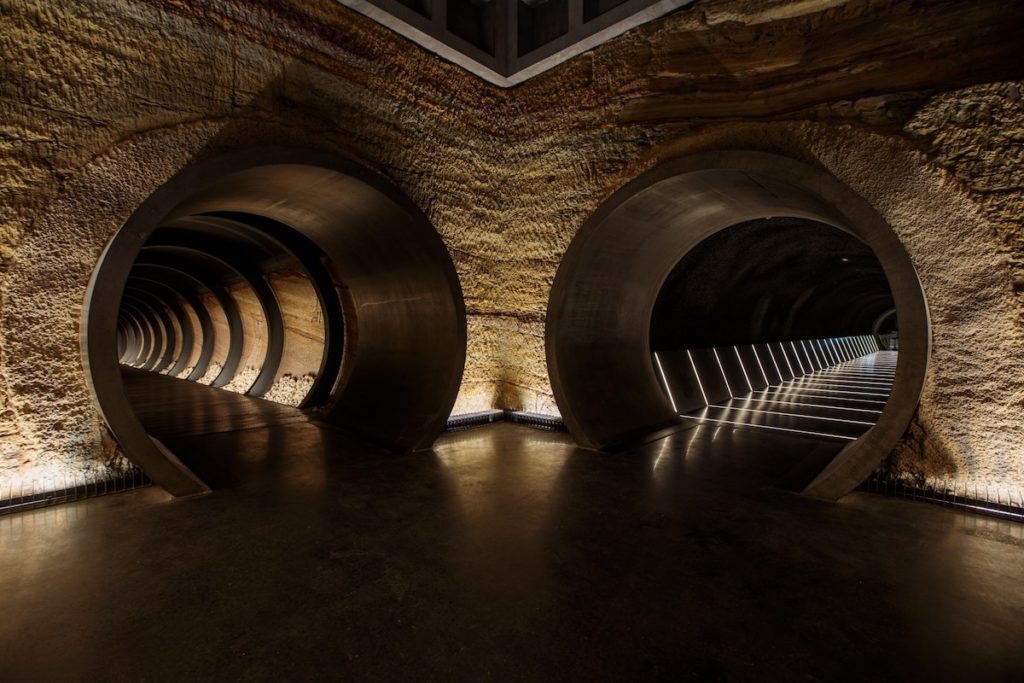
The O also asks the public if they love or hate a piece, the results of which are surprising. For instance, MONA’s defecating “Cloaca Professional” installation has divided O users right down the middle rather than sent them all running for the next room. “We were anticipating more of a backlash in the beginning,” explains co-CEO Mark Wilsdon. “But I think we underestimated the intelligence and openness of the public and our community.”
“It’s difficult to predict what will challenge our visitors,” adds Durling, “and it’s not something we spend a great deal of time thinking about. I always come back to the artists and what they are saying with their work. They’re the ones who are challenging us.”
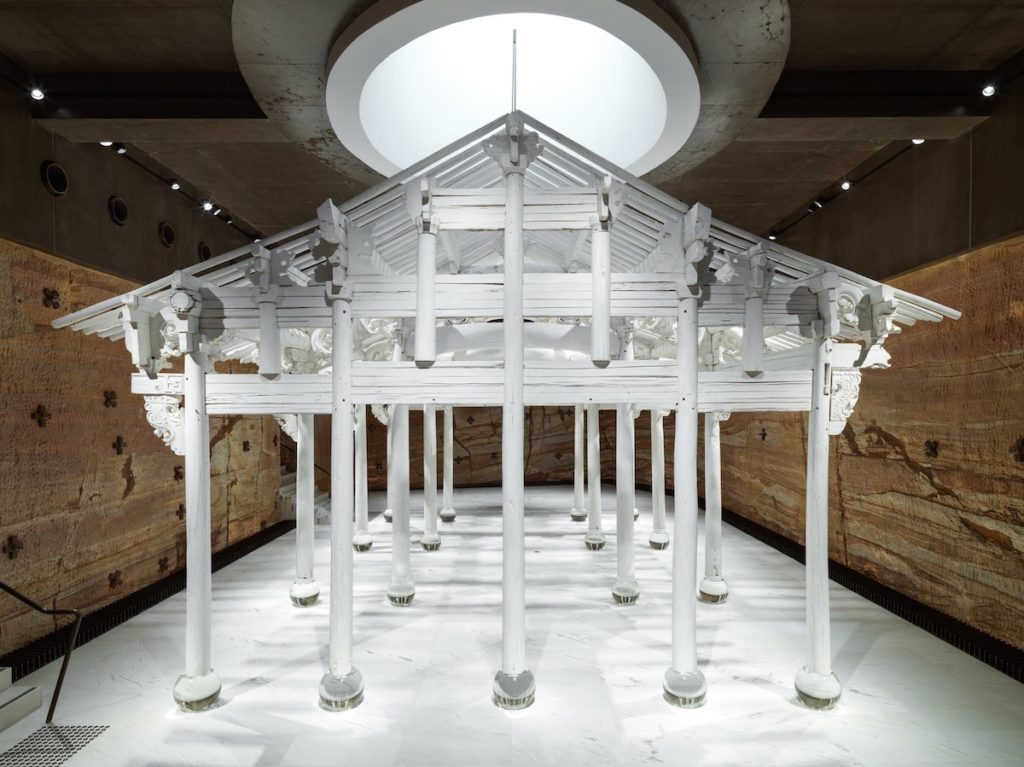
That’ll continue to be the case in the years ahead, starting with a newly opened $27-million “tunnel extension” called Siloam. Aside from featuring “the largest multi-channel sound-based artwork in the world” (Chris Townend’s “Requiem for Vermin”) and a minimalist structure modeled after the Qing dynasty (Ai Weiwei’s “White House”), the ambitious expansion includes an exclusive commission from Alfredo Jaar that took five years to complete. Dubbed “The Divine Comedy,” the simultaneously terrifying and tantalizing Dante Alighieritribute is described as “a three-stage journey through the chambers of the afterlife: hell, purgatory, paradise.” And it’s not a passive experience, meaning it forces visitors to face unsettling inner dialogues and all of the extremes that entails.
“Because we’re on the fringes of the world, we’ve been able to be a bit more daring and experimental,” explains Durling. “The worst possible outcome for [MONA] would have been, ‘Oh, it’s OK.’ We want to provoke emotions — either you completely love it or you completely hate it. We aren’t looking to exist in a gray area.”

